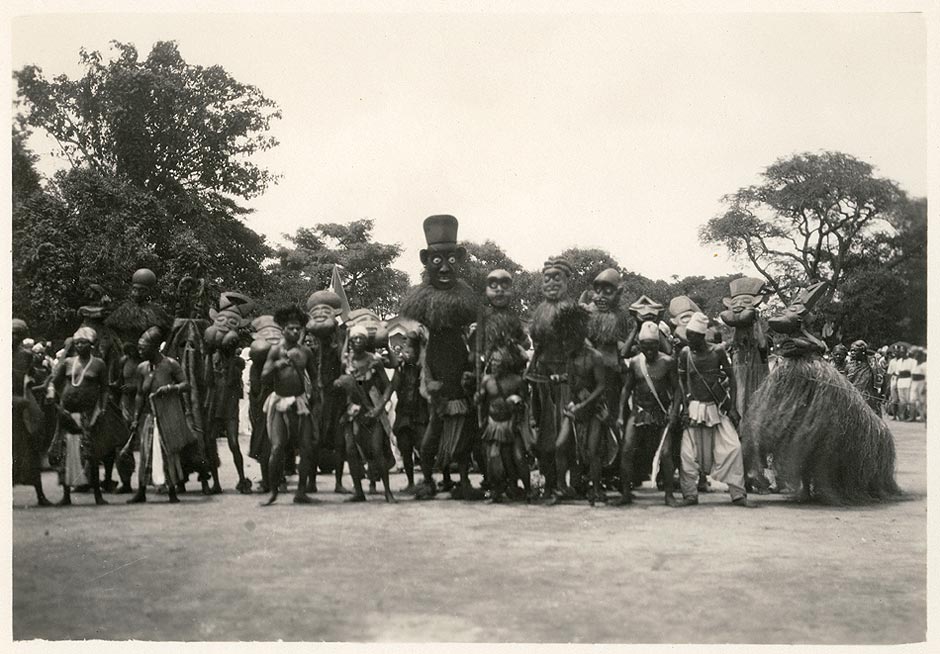The image above is subject to copyright.
Copyrights for Photographic Reproduction
Les feuillets numérisés des registres d'inventaires historiques sont soumise à un copyright.
Droits de reproduction photographique
 Copie dactylographiée en 13 volumes de l'Inventaire original MEG manuscrit
Copie dactylographiée en 13 volumes de l'Inventaire original MEG manuscrit
Registres_inventaire_dactylographie/935.pdf
 Registre d'inventaire original - non indexé
Registre d'inventaire original - non indexé
Registres_inventaire_original/Registre_07_019252_021230.pdf
In the west of present-day Cameroon, a highland region known as the Grasslands or Grassfields shelters numerous tiny states: the Bamenda cultural area in the north, the "Bamileke" kingdoms in the south and the Bamum kingdom in the east. Before the colonial era, these kingdoms vied with one another in prestige and riches as well as in art and architecture. The kings commissioned the best sculptors and bronze casters from the neighbouring regions.

Masks performance. Bamum Kingdom. Photo by Anna Wuhrmann, Foumban, around 1920. Gifted by Josette Debarge in 1932. © Archives MEG
Thought to be a mediator between the world of the ancestors and the world of the living, the spider is used in a divination practice in the Grassfields to determine the cause of misfortunes. The various procedures all use the same basic principle: leaves, sticks or small cards symbolising people and events are arranged around the spider's burrow. When the spider comes out to hunt at night, it disturbs the arrangement in a way which will be interpreted by the diviner in the morning.
© 2021 Musée d'ethnographie, Genève